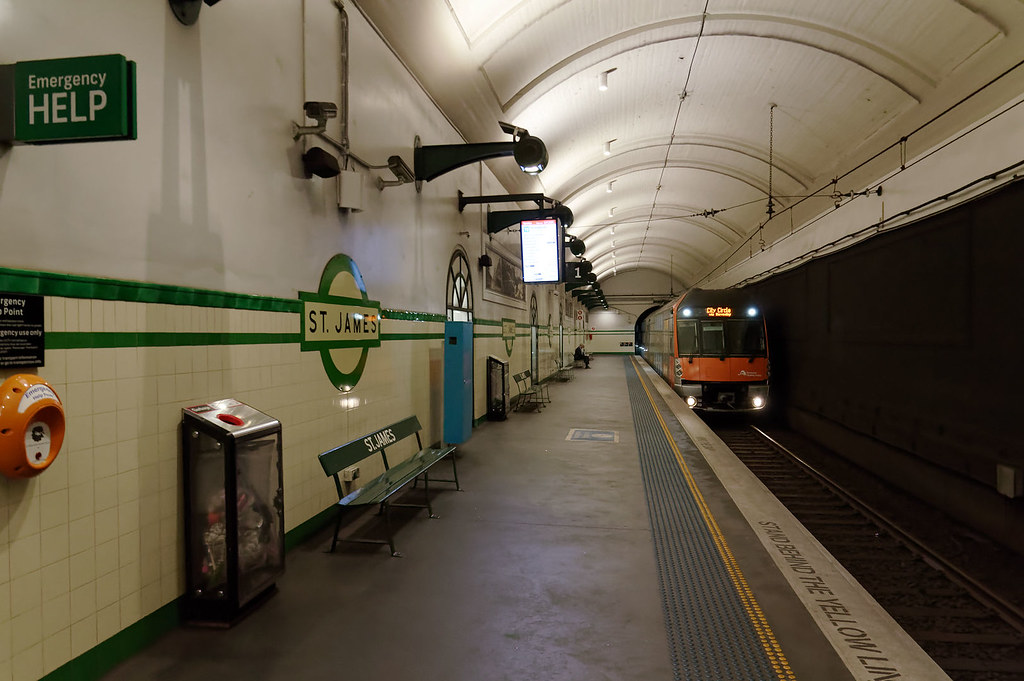 Originally posted by mroeder75
Originally posted by mroeder75 
Nice job chronicling history. Love the comment on standardized time with only two of the clocks pictured synchronized.
Honestly I hadn't noticed, and it seems that the irony also escaped whoever set up the display.
The explanation on the left says "The railways brought with them the standardisation of time to Australia, with a co-ordinated system of timetables for safe-working along the lines and passenger information required to synchronise a large and complex network. Originally most railway stations had mechanical clocks that required winding each week to keep "on time". However, the decision to electrify the Sydney network and building of the Sydney underground railway in the early 20th century also allowed for a new system of integrated "impulse" timekeeping to be introduced. At the centre of the impulse system was a "master clock" that provided timing signals across the network. Connected to the master clock were "slave clocks" located on station platforms, in offices, workshops, parcel rooms and signal boxes across the metropolitan network. The electric signals, sent from the master every 30 seconds, synchronised the slave clocks attached to it to provide accurate and co-ordinated passenger information across the network. This integrated system controlled the city underground network for over 60 years, and there are still a number of slave clocks in place."
FWIW I did notice some slave clocks at other stations which no longer functioned.
 Quote:
Quote: My understanding of history in the U.S. is that standardized times evolved between the 1840s and 1860s as regional railroads and the transcontinental railroad were built. People needed to know when to arrive at the train station. Before that there was "local time" based on some astronomical measurement and displayed on the town clock or courthouse clock. In my little county seat town, I can attest to the fact that the huge courthouse clock atop the bell tower steeple is notoriously inaccurate. Sometimes the four faces are not even synchronized. Present operation may not indicate how well it worked in 1894 when it was installed.
With so many people travelling by train, you can understand how the need for accurate clocks increased. One curious time-keeping device is at the Sydney Observatory overlooking the harbour and is based on a similar device in Greenwich in the UK. At the top of the building, a ball is raised then dropped exactly at 1PM. This allowed the crews on ships to set their chronometers. An accurate ship's clock is an essential component of accurately mapping longitude.
 Quote:
Quote: I collect a few old clocks and am amazed that my 1880s clock is within 10-minutes of accurate after about one-week of operation. I could probably adjust the pendulum. But how would you even know in the 1880s what time it was to adjust pendulum length?
Presumably they were originally adjusted using very accurate sundials?
 Quote:
Quote: I have wind-up clocks from 1979 and 1991 that are very accurate. My 1991 clock with a German mechanism can run from daylight savings to standard time and never need adjusting. My BMW with German engineering can run 2-months and I put another $1,000 into its repair. Oops my discourse on time and expense is not the purpose of a photography forum. I enjoyed viewing your posted photos. Thanks!
Thanks! I hope it was interesting. These days I find Japanese engineering better. Coincidentally, Seiko's development of the Quartz clock revolutionised watches.



 Similar Threads
Similar Threads 


























